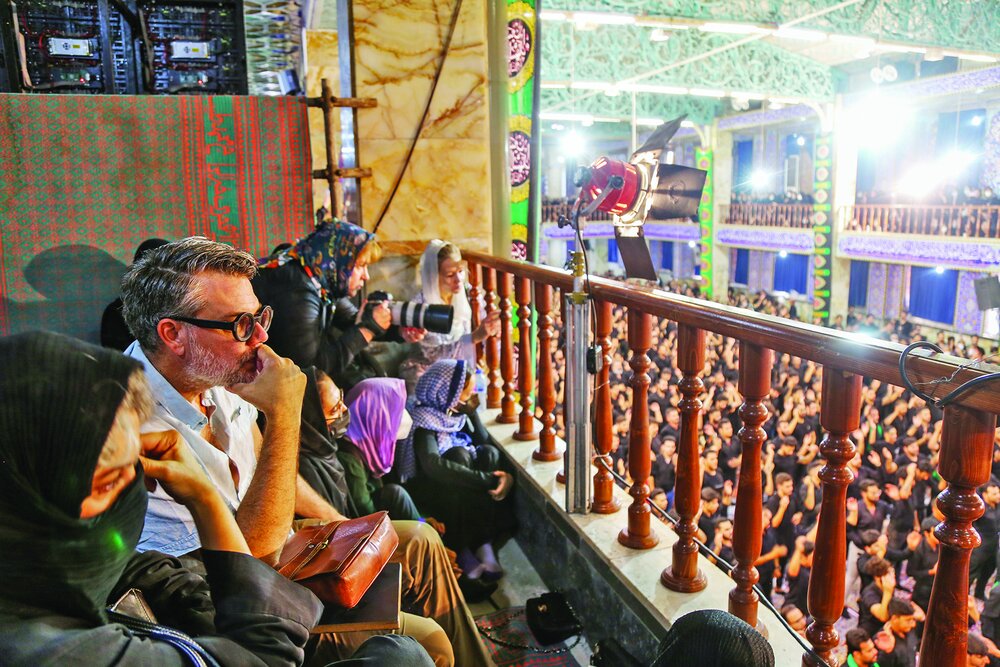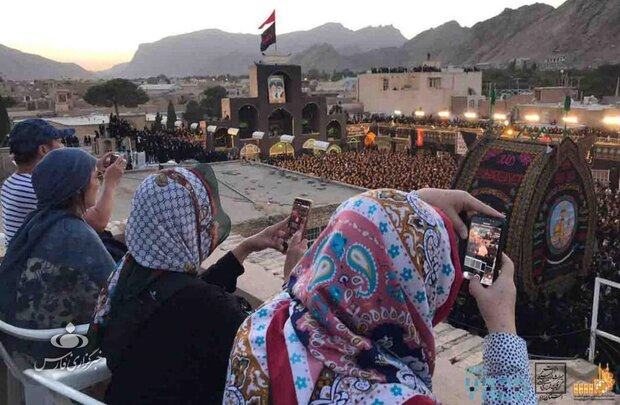500 intl. travelers attend Ashura commemorations in Yazd

TEHRAN—Over 500 foreign travelers attended mourning ceremonies held in Yazd to commemorate the Shia holy day of Ashura, the province’s tourism chief has said.
“More than 500 foreign tourists — on three-day spiritual tours — visited the [mourning] rituals of the [lunar] month of Muharram held in different cities of Yazd [province],” Ahmad Akhoundi said.
The travelers came from 15 countries including Austria, Russia, Spain, and China, the official said.
“It’s a very interesting ritual; the people of Yazd are calm and kind,” a Russian visitor from St. Petersburg told Iran Press. He said he was a historian and that he knew Imam Hussein (AS) and agreed with him.
“We were so excited to know about the traditions here; I’m of the advocates of the places where traditions and customs are important,” Iran Press quoted a female traveler from Croatia as saying on Monday. She added the poems cited, the way people prayed and beat their chests, and their emotions were magnificent and spectacular.
Elina from Italy said it was the first time she visited Iran and saw Muharram mourning rituals and the Iranian culture, which she said was very admirable. “Rituals full of emotions and many religious people; I respect this belief very much, “she expressed her feelings.
A visitor from Barcelona said: “We came to Iran to get familiar with the customs here; the real face of the country is the opposite of what we were told about… Real emotions were seen in the Iranian society; the people adhere wholeheartedly to their religion and traditions.”
The Spanish traveler added: “The feeling and companionship of the people has affected us; we thank the Iranians for accepting us.”
Yazd has long been a destination of many domestic and foreign tourists during the months of Muharram and Safar due to the holding of rituals and special mourning ceremonies.

It is the time when millions of the locals eagerly commemorate the martyrdom anniversary of Imam Hussein (AS) and his loyal companions, slain in 680 CE at Karbala in modern-day Iraq.
Holidaymakers may attend mourning ceremonies, such as Nakhl-Gardani or Nakhl-Bardari, which is a symbolic representation of the Imam’s coffin, resembling an Imam’s funeral; Tazieh, a passionate play inspired by historical and religious narrations; and Sineh-Zani [beating the chest].
Last month, Akhoundi said: “This year, special mourning programs are planned to be held to get (foreign) tourists familiar with religious ceremonies held during these two months, especially on the days of Tasu’a and Ashura,” the official added.
From a theological approach, religious rituals are perhaps a recreation of collective memories that help to shape what is known as collective identity, an essential foundation for a sense of belonging. One such ritual is the mourning ceremony. Rich with symbolism, most of which have historical values, these ceremonies are a platform where communal beliefs and ideas about life and death are acknowledged and as people unite in grief and hope for consolation, they search for new meanings of life and reevaluate and confirm the foundation of their beliefs.
Muharram and the following month, Safar (which includes a commemoration of the aftermath of Karbala) are a period of lamentation for Muslims. War and fighting are prohibited during Muharram and festivities like weddings and birthdays are usually postponed to more appropriate days. People generally wear black out of respect or at least avoid wearing very bright colors.
They say the core meaning of Muharram is beyond such mere bereavement and commemoration of the past. Karbala was an actual and metaphorical venue where the Truth confronted the Lie, where justice spoke vibrant and audible in the face of prejudice, and where courage, passion, and devotion preceded attachment, worldliness, and obstinacy.
The saga is narrated to tell us that compared to the Pyrrhic and momentary victory of injustice, integrity and honesty will always stand the test of time as today the life of Imam Hussein (AS) is honored by millions across the world while the account of his enemies is nearly lost in oblivion. The story also lives to tell us that the majority is not always right. Even if the army of Truth is small, it still is magnanimous in what it stands for.
In July 2017, the historical core of Yazd was named a UNESCO World Heritage. Yazd is regularly referred to as a delightful place to stay, or a “don’t miss” destination by almost all of its visitors. The city is full of mudbrick houses that are equipped with innovative badgirs (wind catchers), atmospheric alleyways, and many Islamic and Iranian monuments that shape its eye-catching city landscape.
Cultural heritage experts believe that Yazd is a living testimony to the intelligent use of limited available resources in the desert for survival. Water is brought to the city by the qanat system. Each district of the city is built on a qanat and has a communal center. Furthermore, the use of earth in buildings includes walls and roofs through the construction of vaults and domes. Houses are built with courtyards below ground level, serving underground areas. Wind-catchers, courtyards, and thick earthen walls create a pleasant microclimate.
The historical core of Yazd is chockful of mudbrick houses, bazaars, public bathhouses, water cisterns, mosques, synagogues, Zoroastrian temples, and centuries-old gardens. From the divine point of view, the city enjoys the peaceful coexistence of three religions: Islam, Judaism, and Zoroastrianism.
AM
Leave a Comment